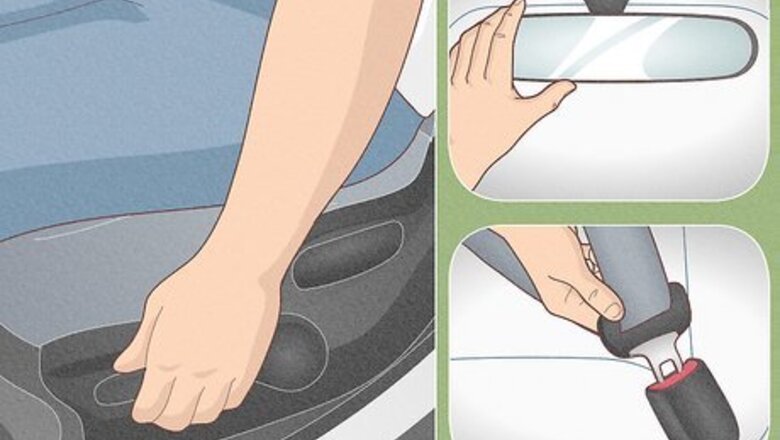
views
- Depress the brake with your right foot before you start the car.
- Move the shifter from P (park) to D (drive) if you want to go forward, or R (reverse) if you want to go backward.
- Leave the car in D (drive) while moving forward. The automatic transmission selects the gear that best matches the speed of the car.
- Put the car in P (park) before you switch it off and engage the parking brake.
Starting an Automatic Car
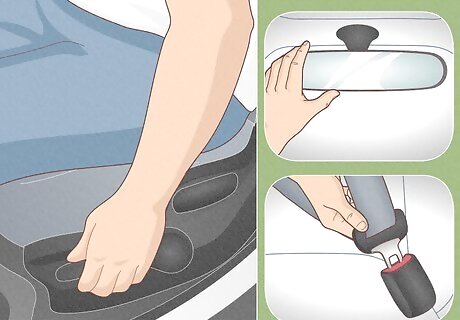
Adjust your seat and mirrors and fasten your seatbelt. When you get into the driver's seat, make sure your right foot can firmly press the accelerator and the brake all the way to the floor. Adjust your seat if you need to, then check your mirrors for visibility. Then, fasten your seatbelt. Take a look around the cabin and familiarize yourself with the car's layout. This gives you a chance to locate the different indicator lights, headlights, windshield wipers, and other features while the car is stationary. If you can't find something you feel like you'll need, don't be afraid to look in the car's manual (it's usually in the glove box—if not, you can probably find a digital copy online).
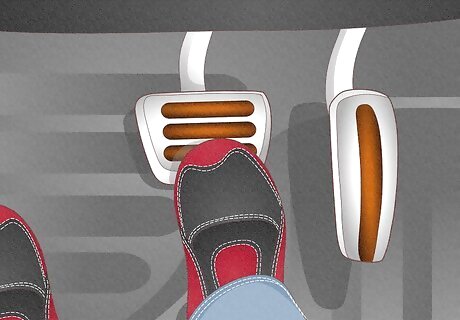
Push the brake pedal down with your right foot. Safety first! Some automatic cars will start even if you don't have your foot on the brake pedal, but many won't. You still want to do it every time. This helps you make extra sure that the car isn't going anywhere.
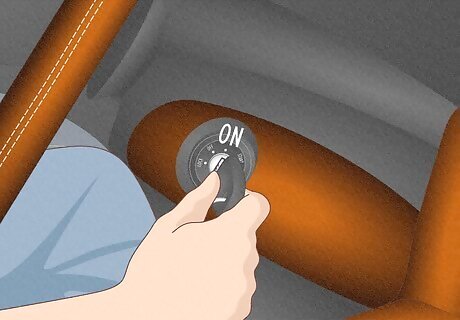
Turn the key or push the button to start the car. Don't take your foot off the brake as you start the engine. Now that you're running, do another check around you—turn on the headlights if you need to, connect your phone, set the climate controls, whatever you need to do to maintain comfort and stability while you're on the road.
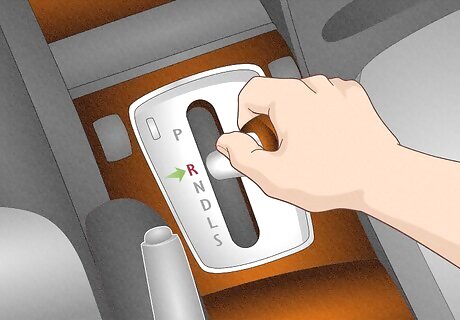
Shift the car into D or R to leave the parking spot. Push in the lock button—it's usually on the side or the top of your shifter. Then, move it from P (park) to D (drive) if you need to go forward, or R (reverse) if you need to back out. You'll feel the shifter click when you line it up with the right gear. Let go of the button and you're good to go. Take your hand all the way off the shifter—especially while driving. If you're used to driving a stick, you probably rest your hand on the shifter a lot. You don't need to shift gears at all while you're driving!
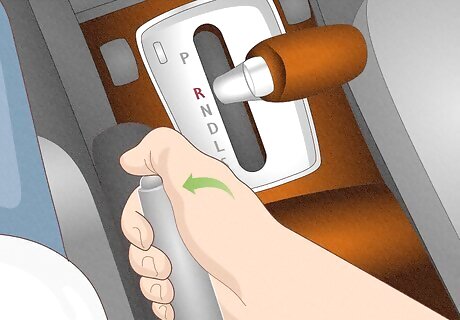
Release the parking brake before you start driving. The parking brake is usually a lever next to the gear shift. Press the button on the end of the lever to lower it so it sits flush. Make sure you don't take your foot off the brake! With the parking brake off, the car will start rolling as soon as you release the parking brake. In some cars, especially trucks and SUVs, the parking brake is a pedal on the floor. You'll typically push the pedal to release it, unless there's a separate brake release lever next to it. Put your car in gear before you release the parking brake. This reduces unnecessary wear and tear on your transmission because you aren't relying on it to hold your car in place. It's especially important if you happen to be parked on a hill.
Driving an Automatic Car
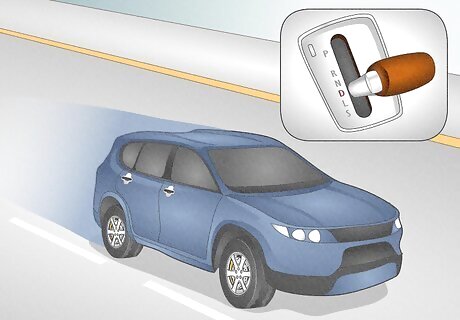
Leave the car in D while you're driving. This is perhaps the best part about driving an automatic! Once you get going, you don't have to mess with the gear shifter at all. Just keep it in D, regardless of your speed. Your car will automatically select and switch to the right gear based on how fast you're going. An automatic car steers exactly the same way a manual car does. In fact, everything about driving an automatic car is the same as driving a manual—you just don't have to shift gears. If this is your first time driving any kind of car, go slow, turning the steering wheel in the same direction you want the car to go. You've got this!
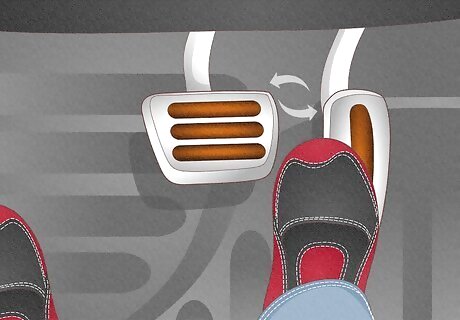
Use your right foot for both the accelerator and the brake. If you've driven a car with a manual transmission, you're already familiar with this method—you used your right foot for the accelerator and the brake, and your left foot for the clutch. Drive an automatic the same way, just without the clutch pedal. Most automatic cars have a footrest on the left (also known as a "dead pedal") where you can rest your left foot. It's true that Formula 1 drivers brake with their left feet. They're also highly skilled drivers operating cars that are specifically designed for this technique. Just brake and accelerate with your right foot and leave your left foot off to the side. Be extra careful if you're driving a car that has a pedal on the floor for the parking brake. It'll usually be way off to the left side so you couldn't mistake it for a clutch, but you still want to be aware of it. If you find your left foot tends to drift toward the pedals as you drive, tuck it behind your right foot and out of the way—problem solved!
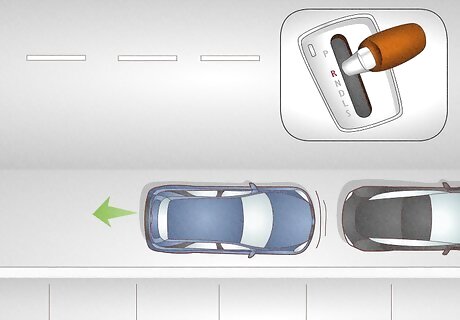
Shift the car into R if you need to reverse. Make sure you come to a complete stop and keep your foot on the brake. Then, press the button on the shifter and move it next to the R. When you take your foot off the brake, you'll be going in reverse. Your car is likely to start creeping as soon as you take your foot off the brake. When going in reverse, you can use this to your advantage—often, you won't need to more than lightly tap the accelerator. Remember that when you're steering your car in reverse, the rear wheels are going to go the opposite of the direction you turn the steering wheel. Turn left to back to the right and right to back to the left.
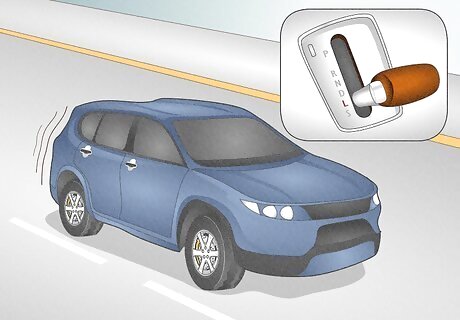
Use lower gears when you need less speed and more power. Your car might have an L below the D on the gearbox, or it might have a "1" and a "2" (for first and second gear). Shifting your car from D to L keeps your car in a lower gear. This is a feature you'll only use rarely, if ever—but it really comes in handy when you need it. Take advantage of the lower gear setting in the following circumstances: Towing: for short distances, gives you a lot more power if you're towing something Wintry weather conditions: helps your tires grip the road; keeps your wheels from spinning out of control Really steep hills: relieve stress on your engine going uphill; less wear and tear on your brakes going downhill
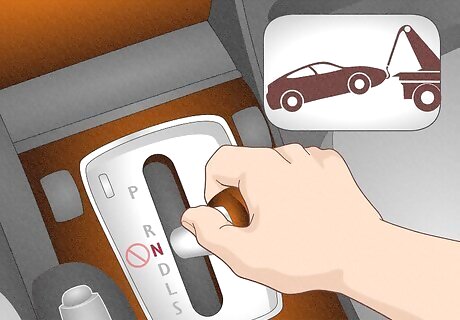
Stay out of N unless your car is being towed. In a manual car, you're in neutral a lot—basically every time your car is stopped. But not in an automatic! Automatic cars do have a neutral gear ("N" on your gearbox), but you're only going to use it very rarely. Some people will tell you that shifting your car to neutral when you're stopped at traffic lights will help save gas. But the truth is that any gas savings is negligible at best. All you're really doing is putting additional (and unnecessary) wear and tear on your transmission.
Parking an Automatic Car
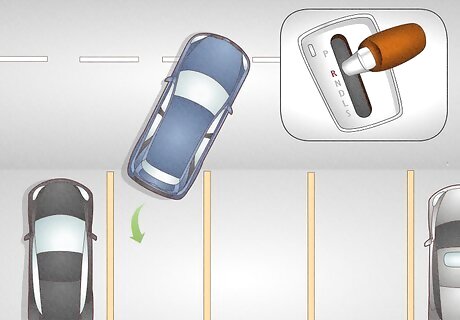
Shift the car into R to back into a parking spot. Unless there's a local law or parking lot restriction, it's always safer to back into a parking spot. To do this in a car with an automatic transmission, simply come to a complete stop with your foot on the brake and shift your car into R. Take your foot off the brake and move it to the accelerator, then tap the accelerator lightly to slowly back into the space you want.
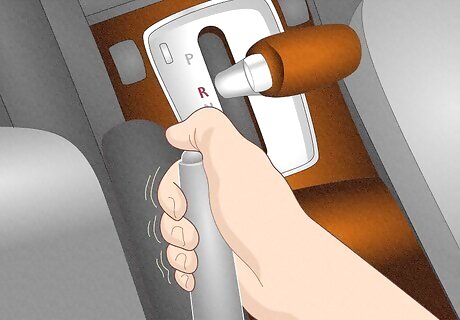
Pull the lever to engage the parking brake. Keep your foot on the brake while you do this to keep your car from rolling. Push the button on the end of the lever, then pull it up until you hear it click. Take care not to pull it up too far or it could get stuck—you'll know when it's engaged. Let go of the button and take your hand off the lever. If your parking brake is a pedal on the floor, push it all the way down once to engage the parking brake. If you're not confident you've engaged the parking brake, just slowly lift your foot from the brake. If the car starts rolling, it's not engaged. It's better on your transmission to engage the parking brake before you change gears.
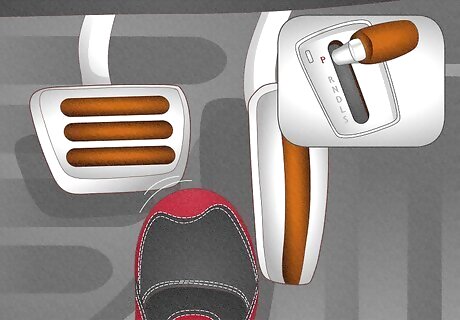
Put the car in P and take your foot off the brake. Push the lock button on the side of the shifter and move it all the way to P. The car stays in this gear while it's parked—you don't put it in neutral like you would with a manual car. Just remember that P stands for "park" to avoid making that mistake.
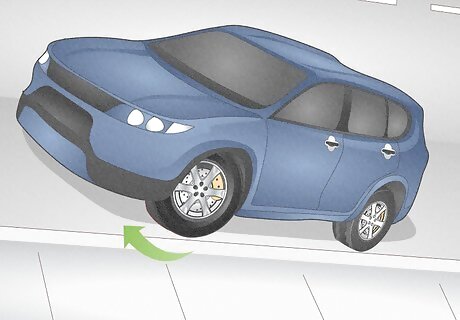
Turn the wheel if parking on a hill. If you're parked on a steep hill, this gives you a little extra protection in case the brakes fail or someone hits your car and it starts moving. Generally, turn your wheels toward the curb if you're parking downhill or away from the curb if you're parking uphill. If you've pulled into a sloping driveway, turn your wheels so that your car won't roll out into the road.
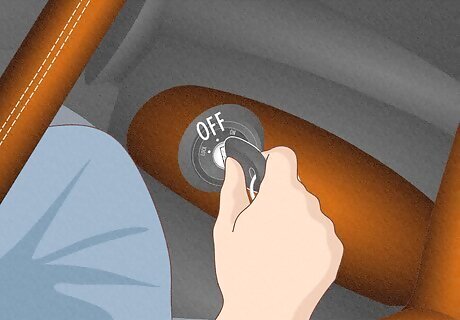
Switch off the car. You're done! Turn the key or push the button to turn off the car and congratulate yourself on your first successful drive in a car with an automatic transmission. Remember to take the keys with you and lock the doors.














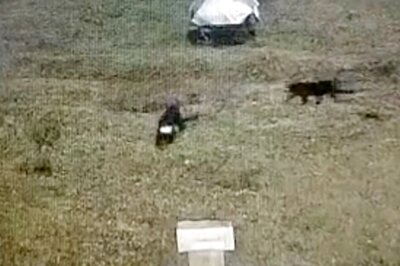





Comments
0 comment